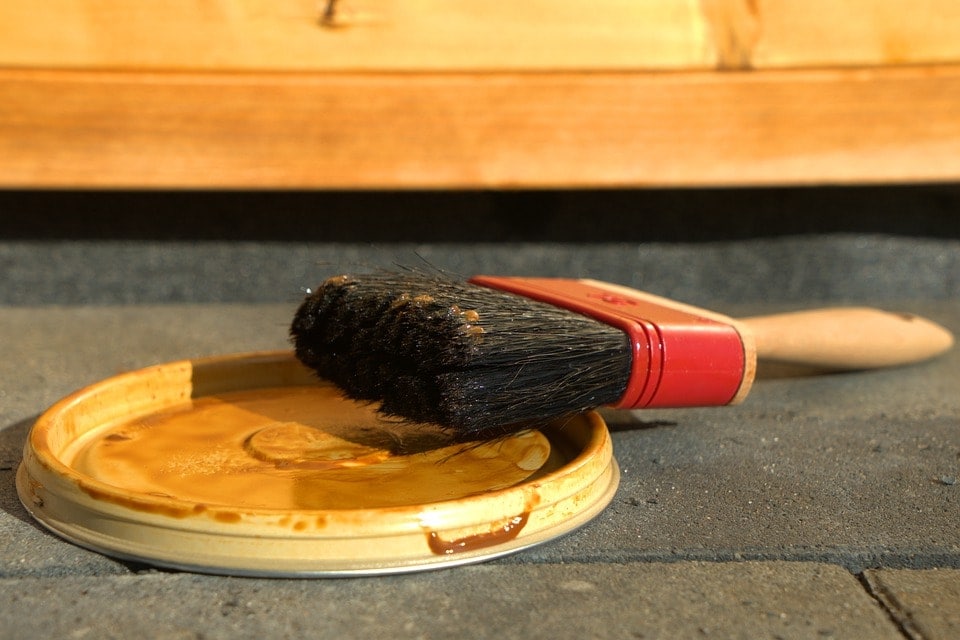How to Remove Spray Paint From Concrete (Quick & Easy)
-
Pete Ortiz
- Last updated:

A rookie mistake in using a can of spray paint is to forget to put something beneath it to catch the oversprays and mistakes that are bound to happen. You wind up with a stellar-looking piece, but also a sidewalk with a lot of ugly colors.
Depending on how much extra paint you’ve laid down, the nature of the paint, and how long it’s been there, there are a few options available for removing it.
 The 7 Steps to to Remove Spray Paint From Concrete
The 7 Steps to to Remove Spray Paint From Concrete
1. Brush and water
The first place to start is with the easiest and least expensive solution. As a universal solvent, there’s almost nothing that immersion in water won’t eventually do away with. If the paint is temporary or new, you can try removing it with a brush and a bucket of warm water. If this alone isn’t enough, you can mix half a cup of trisodium phosphate, a natural degreaser and paint stripper, into two gallons of warm water.

2. Power it off
The next step that doesn’t involve chemicals is using the brute force of a power sprayer. Make sure the one you use can deliver 4,000 psi of pressure. Spray at an angle, however, because if you go head-on, you might not just get up the spray paint; you might chip apart the concrete. If you have access to a power sprayer that can heat its own water, that might work a little better.

3. Blast it with sand
The final method that doesn’t involve chemicals is using a sandblaster to chip up the paint. Load it with sand or silica in the appropriate compartment and water in the other. Maneuver it over the location of the stain and go to work. Not only will it take up the new spray paint, but it might also get rid of older stains, too.
4. Lay on the gel
Rather than dumping potentially caustic chemical strippers on concrete, and therefore the ground, you can use a soy-based gel stripper that peels away the paint rather than dissolving it. Apply the stripper to the stained area and allow it to soak in for 10 minutes. Then, use a stiff-bristled brush to brush it up. Because it’s soy-based, it’s safe to hose off.
5. Chemical stripper
Chemical strippers require a lot of care because you need to clean them up after dissolving the paint, rather than spraying them off with water. They can also damage the concrete. Because of that, chemical strippers are usually used only on the smoothest concrete, with fewer natural pits and pores for the paint to get into.
Apply your chemical stripper to a brush with natural bristles – it will melt synthetics – and scrub up the paint. If the concrete has natural pits in it, you might need to scrub with a hard wire bristle brush. Again, don’t forget to clean up the chemicals properly.
6. Paint thinner
You can use regular paint thinner by pouring it directly over the stain and allowing it to sit for up to 40 minutes before scrubbing it with a hard bristle brush. Don’t forget to clean up the thinner and paint after you do this. That stuff is nasty.
7. All the rest
If all else fails, you can clean up the spray paint with an oven cleaner. Spray it on the affected area and then leave it for 40 minutes. Although it’s designed to dissolve grease, it can also clean up spray paint.
Finally, if for some reason you have the following chemicals handy, they might work methylene chloride, methyl-ethyl-ketone, sodium hydroxide, or xylene. Be smart if using these. Wear proper protective equipment, and clean it all up when you’re finished.
 Conclusion
Conclusion
If you use spray paint, even if you exercise a lot of care, there’s a good chance you’ll get it on something you don’t want it on. There are a few options using water and sand that might work. If not, you’ve got a couple of chemical options that should do the trick. Just follow instructions on how to clean them up, because you don’t want to replace one mess with another one.
Featured image credit: qimono, Pixabay
Contents

 The 7 Steps to to Remove Spray Paint From Concrete
The 7 Steps to to Remove Spray Paint From Concrete
